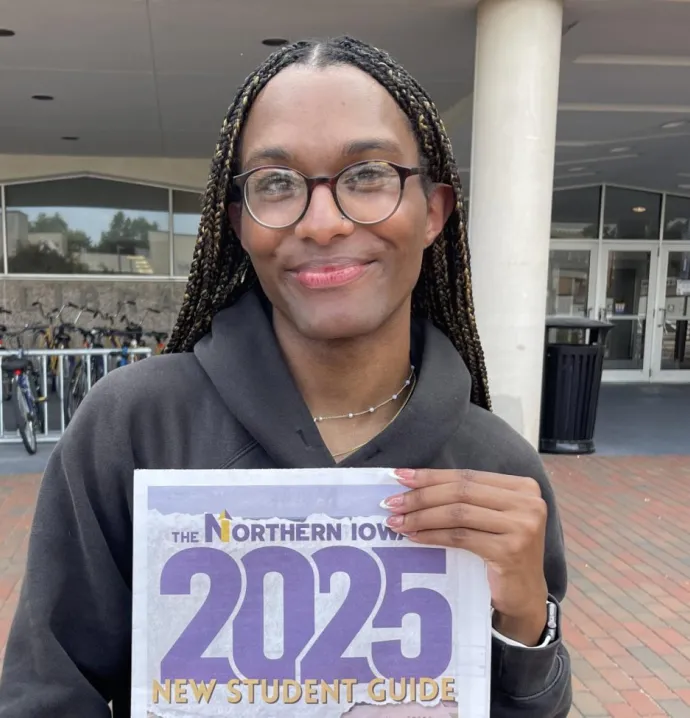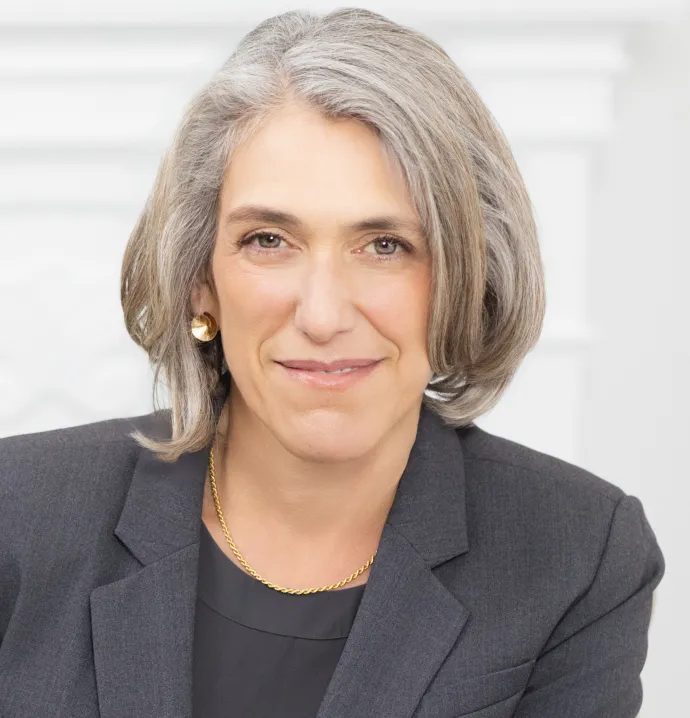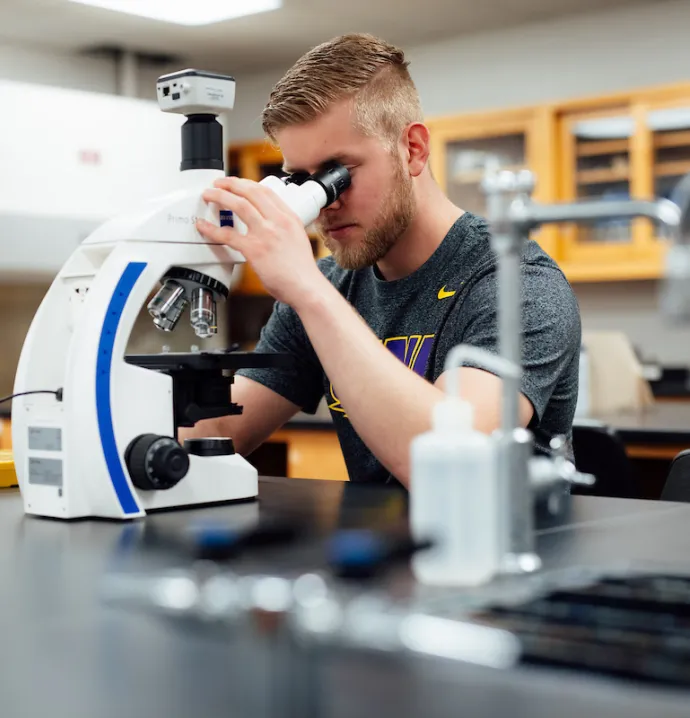The search for Central Hall continues
The search for Central Hall continues
UNI students will once again search for the remains of the oldest building on campus.
This may seem a bit abstract, but please consider this: The grounds of the University of Northern Iowa are like a Jell-O salad.
Think of the grounds as a three-dimensional mold, the jiggly, gelatin confection analogy within which layers of the university’s history reside. Bricks, limestone rubble, nails and all other manner of bygone miscellany then become the fruit cocktail, the artifacts that are unearthed as you excavate through that iconic dessert.
At least that’s what it seemed like to the students in Associate Professor Donald Gaff’s archaeology fieldwork class, who were on an archaeological quest to find the remains of the oldest and first building on campus – Central Hall.
Spoiler alert: They didn’t find it. But that’s mostly because of the sheer amount of historical remains that accumulated between that first building and surface above it. The Jell-O salad had a lot of fruit cocktail, if you will.
And they haven't given up. Gaff's students will once again open excavation units on campus this fall.
Construction at the site of Central Hall, which is near Maucker Union, has been rampant since Central Hall burned down in 1965. Lang Hall was built and remodeled. The old administration building and the first Gilchrist Hall were constructed and demolished. The Crossroads, which connected the administration building and Lang Hall was constructed and destroyed. Maucker Union itself was built and the Multicultural Education Extension was added as well.
“There’s a complex history of the land there, so we’ve only just started to dig through the top of it,” Gaff said.
Gaff’s decision to search for Central Hall was sparked by several factors. First, it’s the 150th anniversary of the building’s construction this fall.
Central Hall was built in 1869 as one of Iowa's Soldiers' Orphans' Homes to house children orphaned by the Civil War. The building held the first classes of the Iowa State Normal School, which would later become UNI, in 1876. The building marks the beginning of UNI’s story, and Gaff was hoping his class could find the remains.
They didn’t, but the experience was still valuable, which leads to the other factor that led to Gaff’s decision.
Typically, archaeology students learn the details and techniques of excavation during field schools, which are usually held in the summer. But this arrangement can pose challenges, Gaff said.
“I used to offer the traditional, classic summer field school, but it’s hard because students might not plan financial aid through the summer or they have jobs or travel plans,” Gaff said. “I came up with the idea of the doing the class this fall to provide the opportunity for students who wouldn’t have the opportunity to do it. It was an abbreviated field school.”
The students learned the basics of excavation in the fall, and then moved to the lab in the spring, where they catalogued and analyzed what they had found, which was mostly bricks and rubble, but also included, buttons, sewing pins, glass and coins from the 1980s.
One student, sophomore Dakota Maas, was tasked with identifying the bricks the class uncovered, and arrived at an approach that involved using a color sensor to try to match the bricks with current buildings on campus.
He discovered that the bricks mostly corresponded with Maucker Union and the now-demolished Crossroads at Lang Hall.
“It is difficult to get an exact date with this method, but using the color sensor narrowed down a timeline and an approximate location of the bricks found on site,” Maas said.
The findings help confirm that the class dug down only into the 1980s and 1970s, but Gaff plans to continue the project this fall and reopen the excavation units that showed the most promise.
Maas, who plans to pursue a career in archaeology, said he hoped to continue his research next semester.
“I hope as we dig further down, we will discover more artifacts and get a bigger picture of the history of the land where Central Hall stood,” Maas said. “If we are lucky and patient enough, maybe we will find artifacts to tie to the historic Central Hall itself.”




